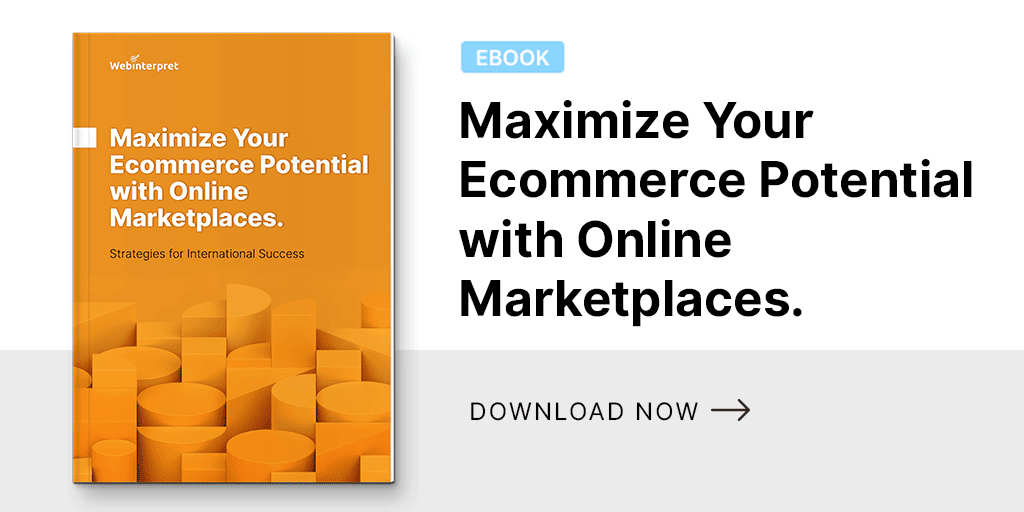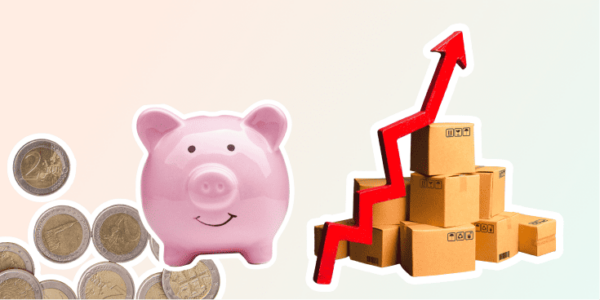
Cross-border trade: Adrien Salvat’s expert insights [Video]
“Challenges for cross-border selling on marketplaces” is the topic of the expert video series with Adrien Salvat, Webinterpret’s CEO.
Ecommerce is constantly evolving. If you want your online business to stay competitive, you need to stay ahead of the current challenges in the virtual cross-border trade landscape.
In his video series, Adrien Salvat talks about three key areas of interest when it comes to international marketplaces. Watch to find out more about:
- AI revolution’s impact on the marketplace shopping experience
- Finding growth opportunities in a steady or decreasing market
- Increasing challenges of selling globally and staying compliant with a multitude of international regulations
#1: AI revolution
AI-powered automation solutions help online businesses increase productivity, visibility, and, above all, sales. Especially when it comes to the cross-border trade context and solving its challenges.
But here is another question: how does the sudden wide accessibility of AI tools affect the shopping experience? Your competition? And most importantly, you and your sales strategy?
Watch the video below to learn how the AI revolution impacts the marketplace shopping experience:
#2: Steady or decreasing market
Economic slowdowns can be challenging for many online businesses. The trick to surviving them is to get ahead of the bad curve and treat them as an opportunity to grow. With the right plan in place, online businesses can not just survive but thrive during challenging times.
Watch the video below to learn how international marketplaces can play a crucial role in finding growth opportunities in a steady or decreasing market:
#3: International regulations
It is crucial for online businesses to stay up to date with the latest regulations that might affect them. In recent years, we have witnessed numerous changes in the cross-border landscape, which can seem complex. On the other hand, they can also provide opportunities for your business to expand and reach new customers.
Watch the video below to learn more about the increasing challenges of selling globally and staying compliant with a multitude of international regulations:
Final thoughts
Marketplaces have become increasingly popular in recent years and are growing faster than the overall industry. They’re expected to continue developing into a crucial part of the future of ecommerce.
But online shopping is no longer an activity limited to domestic markets only. Consumers worldwide are searching for both products that aren’t accessible in their domestic market or are available at a more affordable price, regardless of their origin.
As it happens, cross-border commerce shows much more potential for growth than domestic transactions. In fact, it is growing twice as fast. eBay alone has over 180 million active users on 190 markets worldwide.
As much as 71% of European shoppers declare that they purchase products from foreign retailers.
If you want your online business to grow, selling internationally is the answer. But the key is setting your global business for success from the beginning. And that entails being aware of the challenges you might encounter and planning a smart, proactive strategy to beat them.
About Webinterpret
Webinterpret’s AI-based solution enables selling more effectively in international marketplaces with automated listing localization, marketing, and logistics (shipping and returns). Our solution is perfectly integrated with marketplace platforms, such as eBay or Amazon. By giving your international customers a full end-to-end local shopping experience, Webinterpret improves your conversion and helps establish your business on a global scale.
Don’t wait and start exploring international marketplaces to unlock your true sales potential.

Download the complete guide to AI seller tools!
Sources
Related Posts:
Ecommerce Newsletter
By clicking the “Subscribe now” button, you agree to receive our monthly e-mail newsletter and regular marketing and commercial communications by email from Webinterpret regarding marketing trends and our digital marketing services. You confirm that you have read and agreed to Webinterpret’s Terms of Service and Privacy Policy.



